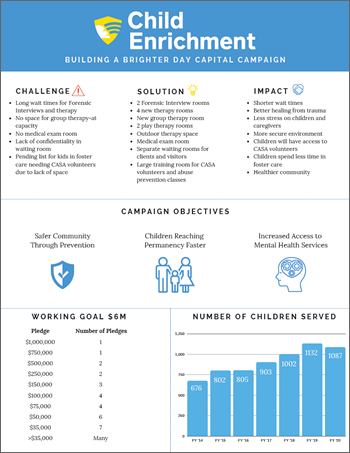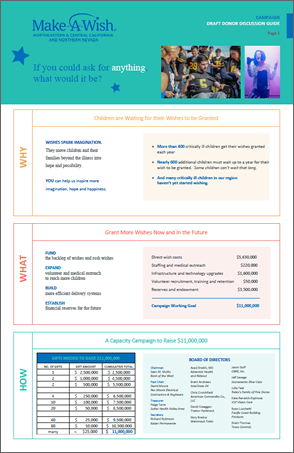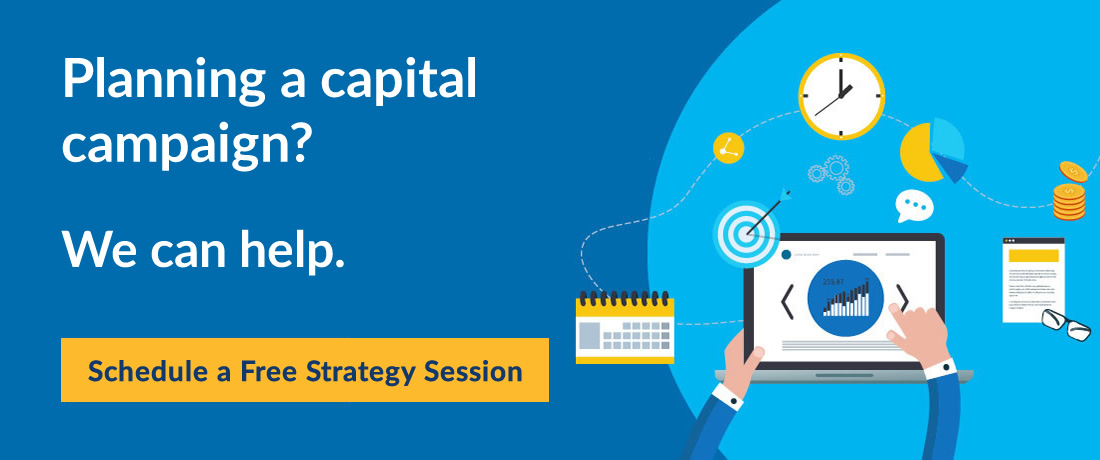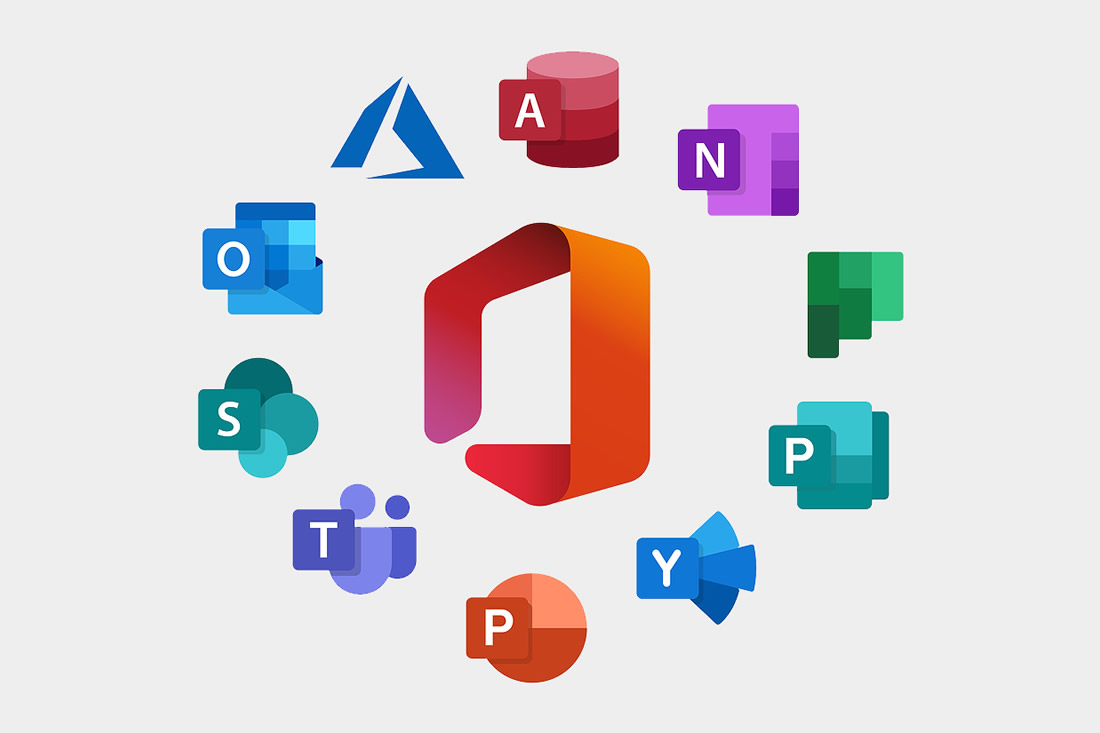Ditch the Fancy Case for Support and Brochure – Use This Instead

It’s likely you know you need a case for support for your capital campaign. What you might not know is what it should look like, what to include, or how it gets created.
A case for support, often mistakenly known as a campaign brochure, answers the question, “why should I give?” It makes a compelling case about the vision and purpose of a campaign.
The size and shape of a case for support varies based on who you talk to and the stage your campaign.
Yes — a campaign case for support evolves over time!
Want an expert’s input on your capital campaign materials? Request a free strategy session to chat with a pro.
Don’t Make this All-Too-Common Campaign Mistake
Unfortunately, many nonprofit leaders assume that one of the first steps to planning a successful campaign is creating a beautiful, well-designed, four-color, case for support (AKA a campaign brochure).
Nonprofit leaders (along with graphic designers) believe big donors want to see something glossy and highly produced, which brings the project to life.
But nothing could be farther from the truth!
In reality, most donors would rather see their donated funds go to programs and services, not glossy brochures. And most donors today don’t take the time to read anyway. Therefore, more often than not, a multi-page brochure will likely end up in the trash.
Flexibility Matters, Especially Early On
More importantly, campaigns evolve over time. Once you’ve printed hundreds (or thousands) of brochures, it’s much harder to change course.
I can’t tell you how often I’ve seen a beautifully-produced campaign brochure which is out of date ten minutes after it leaves the printer. They end up stacked to the ceiling in the Development Director’s office, only to be thrown out years later.
You Need a STRONG Case for Support… Not a Fancy One
Don’t let the title of this post mislead you to thinking you don’t need a strong case for support — it simply doesn’t need to be in a fancy format.
Developing a well-written document that spells out a clear and compelling vision for the future of your organization will be one of the most important tasks in preparing for your campaign.
A Huge Missed Opportunity
This is the document you’ll initially share with prospective donors during the feasibility study phase of your campaign. If you present a final case for support in brochure format, there won’t be any reason for interviewees to provide feedback. Your project will appear to be fully-designed and finalized.
In other words, a fancy campaign brochure defeats the purpose of getting feedback on the project. And that’s a huge missed opportunity to engage potential donors early on in your campaign.
What Should You Use Instead of a Fancy Brochure?
We recommend two primary documents you should use to begin a campaign, as opposed to a formal, highly-produced, brochure-type case for support.
1. A short, effective Word document
Prior to conducting a feasibility study (or a less formal donor discussions prior to your campaign), you will want to prepare a DRAFT of a case for support.
- Aim for a well-written, clear, and compelling document.
- Keep it under five pages and make it easy to read.
- Avoid jargon and long, complex sentences.
- Use headlines and subtitles throughout.
Your headlines and subtitles should convey the gist of your campaign without someone having to read any of the actual text. For a simple test, invite a few people who are unfamiliar with your campaign to read only the headlines and subtitles. Then find out if they understand what your campaign is about.
The beauty of a simple Word document is that it can easily be changed as the program or project progresses and develops.
2. A Visual Donor Discussion Guide
Create a Donor Discussion Guide — a graphic depiction of your campaign to use on feasibility study interviews or donor discussions, as well as actual solicitation meetings. This piece covers the highlights of your organization and your campaign. You may use a graphic designer for this one, but keep it to one large piece of paper, back and front.
You can print these (a few at a time) from your printer or the local copy shop and they can be updated on a regular basis.
Sample Donor Discussion Guides
Take a look at the samples below for more ideas (click the image to see the full document).


Use a Working Goal Until Your Campaign is “Public”
Living, evolving documents are especially important for the beginning phases of your campaign. In fact, you will use a “working goal” until you’ve raised 70% or more of the funds you hope to raise. The working goal doesn’t become official (or public) until the kick-off of the public phase of your campaign.
A working goal is something you’ve shared only with the people closest to the organization and your campaign. Although you may have shared some of the plans and the vision for your campaign on your website and in other places, you won’t want to share a formal goal for your campaign publicly until you are ready to ask the community for gifts (i.e., after you have already raised 70% or more of your goal).
Adjust the Goal and Scale Accordingly
The only people who have seen the working goal are individuals you’ve solicited for leadership level gifts, as well as your board members and campaign committee during the quiet phase of the campaign. This way, you can adjust the goal (up or down) and scale your project accordingly based on how much you initially raise.
You will announce the official goal during the kick-off to the public phase. By that time, you should be confident that you can raise enough money during the public phase to reach or exceed the official campaign goal.
Greater Flexibility and Donor Buy-In
So don’t get your campaign off on the wrong foot by creating a fancy campaign brochure / case for support right off the bat.
Instead, focus on developing a strong case for support and a donor discussion guide that you can use to get buy-in from your key donors and supporters during the early phases of your campaign. Keep your documents flexible and easy to update. You’ll find that this is a much better alternative to having a slick and fancy campaign brochure.




Leave a Comment